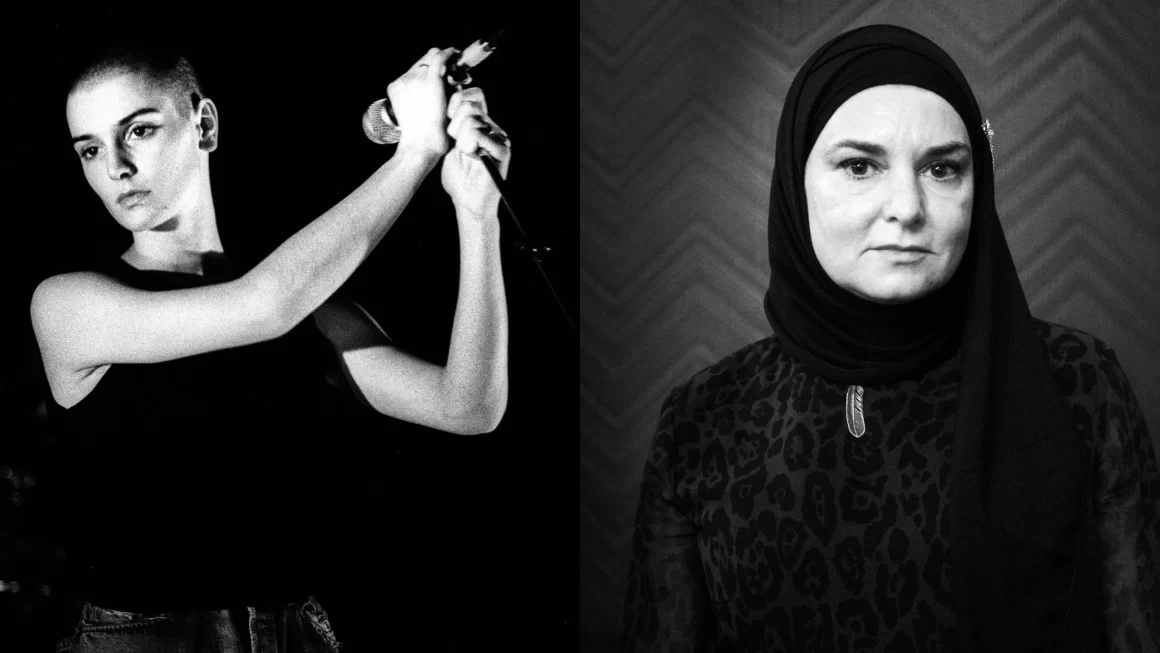By Aislinn O’ Keeffe
There is no combination of words that could contain the spirit of Sinéad O’Connor, known in her personal life as Shuhada’ Sadaqat. Even as the press is rushing to churn out adjectives to describe her, they fall flat in her shadow. Yet still we will attempt to honour her in words.
Unlike many in the public eye, for Sinéad, words and actions were not separate. When Sinéad used words, they were a tool to bring about change in the world and were always accompanied with action. Her greatest medium was her voice. In her art as in her life, she utilised both to “create the difficult conversations that need to be had”. At heart, she was an activist and her music, her greatest tool.
When 19-year-old Sinéad walked into the offices of Ensign record company, her incredible voice and talent, coupled with her petite stature and stunning beauty was the music industry’s wet dream. She very quickly disabused corporate shills of their sexist vision for her, however. When efforts were made to ‘feminise’ her and pressure her into wearing dresses and make up, she asserted her autonomy by shaving off her hair entirely, greatly upsetting male executives. She later remarked with her characteristic wit that she wanted to prove that “I was the sole author of my own destiny, despite being a woman.” Sinéad consistently asserted her humanity throughout her life, and she was cruelly punished for it.
Perhaps, what Sinéad will ultimately be most remembered for is her kindness, deep empathy for, and love of, humanity. It is evident that this is the driving force in her life. She was not one of those multi-million-dollar celebrities who implored the less well-off to donate what little they had to charity, instead she gave away millions of her own money to help those in need.
Sinéad had an inherent understanding however, that the causes she championed had a systemic root, and she was not content solely with providing charity. Instead, she fought for change and to challenge the structural causes of oppression and poverty. She took on the Catholic Church, the institutions of the state, and corporate greed. For women, people of colour, the LGBTQ+ community, oppressed groups and the working class she will always be remembered fondly for her activism and singular dedication to justice and equality. Among the people and causes she supported are trans women, abortion rights, Black Lives Matter, women’s rights, refugees, Travellers, and she vociferously opposed poverty.
One remark often made is that she wasn’t afraid to tell the truth, as if she were made of Teflon. A clip from her speech at an abortion rights protest betrays this narrative. Her hands are shaking, yet still she delivers a powerful speech as she takes on the institutions of the state. This is a woman, who from childhood, was punished and abused for simply existing, and specifically for existing as a girl in the Catholic theocracy of Ireland. In adulthood, she was continuously ridiculed and bullied by the press as are many women in the public eye. It’s not true to say that she was not afraid to speak up, the truth is she was terrified, yet she still chose to be a voice for the most oppressed and exploited, to speak truth to power, at great cost to herself.
From the time she tore up the picture of Pope John Paul II, the press made Sinéad a target of ridicule and went to cruel lengths to discredit her, labelling her ‘insane’. This vicious campaign lasted throughout her life and is even continuing in death. In recent days, many publications have referred to her as ‘troubled’ and even ‘erratic’, conveniently omitting that the source of much of her trouble was the press itself. It is a common tactic that is used by powerful institutions to bring truth tellers into disrepute and to sabotage their message. Unsurprisingly, this relentless bullying took a huge toll on her and in recent years she was diagnosed with Complex Post Traumatic Stress Disorder (CPTSD). Even still, she remained undeterred. She made her feelings about the mainstream media clear. As a timely reminder, in a letter she wrote to Piers Morgan in 1994 she said, “the only thing your paper is any good for is wiping my arse”.
Many establishment figures have been filling up their 140 characters with their takes on Sinéad though in life many of them disapproved of her message and how she delivered it. But Sinéad wasn’t bound by ‘respectability’ politics or tactics that made the powerful feel comfortable. Many may feel it safe to embrace her in death, feeling that she no longer poses a threat to their power. Many will even profit financially from her death.
But those who feel that her power has diminished in death would be wrong. Sinéad O’Connor has inspired, and will continue to inspire, countless generations of people to step into activism and to fight oppression and exploitation unapologetically. Her activism continues to resonate as we face into continued struggles in the wake of increased far right threats and capitalist turmoil. Sinéad’s music will provide the soundtrack to our movements and her battle cry will ring in our ears – “fight the real enemy”.












